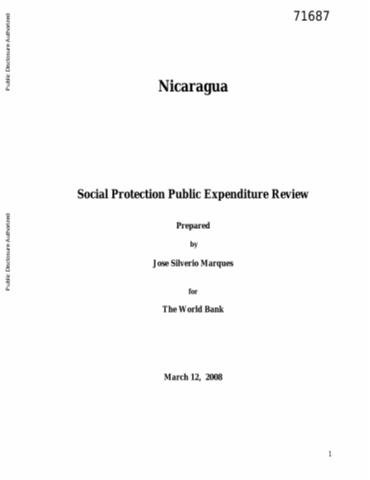Resource information
This review of public expenditures on Social Protection (SP) in Nicaragua is based on the analytical framework of Social Risk Management (SRM) developed by the World Bank. The concept of managing social risk comes from the notion that certain groups in society are vulnerable to unexpected shocks which threaten their livelihood and/or survival. Social protection focuses on the poor since they are more vulnerable to the risks and normally do not have the instruments to handle these risks. This prevents the poor from taking more risky activities that usually yield higher returns and that could help them overcome gradually their poverty situation. Social risk management involves policies and programs aimed at reducing key risks, breaking inter-generational cycle of poverty and vulnerability. Risk management consists in the choice of appropriate risk prevention, mitigation and coping strategies to minimize the adverse impact of social risks. Social protection under SRM is defined as public interventions to assist individuals, households and communities to better manage risk and provide support to the critically poor. Thus Social protection should provide: a safety net, particularly for the poor that are likely to fall in the cracks of established programs; and a springboard for the poor to bounce out of poverty.


